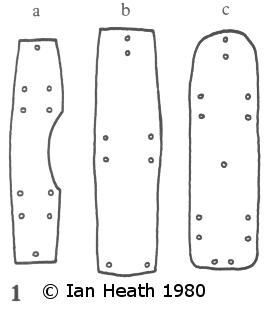|
Download 2 free e-books from Amazon Audible |

Try Amazon Audible Premium Plus and Get Up to Two Free Audiobooks
LAMELLAR ARMOUR
An extract from Armies of the Dark Ages 600-1066by Ian Heath

|
Download 2 free e-books from Amazon Audible |


1. LAMELLAR ARMOUR
Lamellar was a type of body-armour which originated in Central Asia some time before this period and remained popular throughout, surviving in the Far East until the present century. It consisted of basically rectangular lamellae punched with a number of holes and laced together in rows by leather thongs, usually overlapping from left to right or right to left, the rows then being laced to each other overlapping upwards. Lamellar gave greater freedom of movement than scale and was lighter, cheaper and easier to produce than mail.
Splint-armour is an alternative name sometimes applied to lamellar though that term has been reserved here for non-body armour of similar laced or rivetted lamellae construction.
The oldest practically intact non-Asiatic lamellar corselet, excavated on the site of the Battle of Visby of 1361 but of somewhat earlier date, consists of over 600 lamellae averaging 9½cm by 2cm, arranged in 8 rows at the back and 6 rows plus 3 short vertical rows at the front, joined at the shoulders by 2 more vertical rows and buckled at the sides. Asiatic corselets seem generally to have had only one opening, at back or front.
3 examples of lamellae are shown here. 1a is 5th century Hunnic or Turkic, 1b is 7th century Lombard, and 1c 10th century Swedish; some of the lace holes have been reconstructed.
Archaeological and literary sources point to iron, leather and bronze (probably sometimes really brass) being the most common materials. Bone, horn and wood were also used, and gold lamellae, such as would have been worn by Byzantine guardsmen, have also been excavated. Metal lamellae were rarest amongst Asiatic peoples